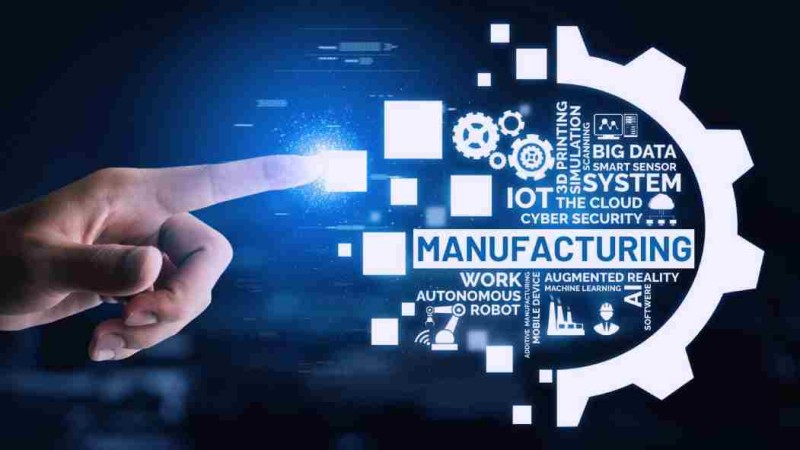Digital Transformation: There are many positives and negatives to the large number of customers for digital change in industry. On the one hand, there is probably a solution available to deal with whatever problems you may be having. Were things so easy, companies wouldn't have the same problems twice. Instead, thousands of issues spread over several product lines for firms. Therefore, in order to address a variety of difficulties, a typical production company may have many DX efforts operating in tandem. These initiatives are usually led by a dispersed, technology-focused approach.Digital Transformation In Manufacturing In the end, this leads to the misallocation of resources and the tiny number of projects that actually bring about meaningful development.
Top Tools for Implementing Digital Transformation in Manufacturing
5 instances of digital revolution in industry
Several forces are driving the shift to digital. There are five different transformation types used in manufacturing, and they are frequently combined. The good news about digital transformation is that it generally supports important business goals that are more sustainable. Initiatives for digital transformation might be in line with company goals, including raising service standards, allowing innovative consumer experiences, and enhancing product quality.Digital Transformation In Manufacturing These kinds of initiatives strengthen the bond with clients while improving their interaction with your products and business. Other advantages of these projects may include increased productivity and a decrease in scrap and rework.
1. Transformation of processes
Businesses look at their processes in this kind of transformation, whether they are in the manufacturing floor, field service, or design process, and use digital technology to facilitate process change. This illustration of digital transformation frequently results in increased effectiveness and lower costs.Digital Transformation In Manufacturing Examples of business activities include bringing digital performance management into the factory, enhancing cooperation across the product lifecycle, and optimizing design for manufacturability and serviceability. In the end, the more information you gather, the more successful your digital marketing campaigns will be. Directly or through your distributors, you may increase sales by gathering more end-user data.
2. The change of products and services
Every manufacturing company's creations are its fundamental component. In a market that is always changing, businesses must provide high-quality services and new goods to remain competitive.Digital Transformation In Manufacturing Through digital transformation, businesses are finding methods to enhance service delivery and iterate more quickly on the features, products, and customizations that their consumers want. Creating a digital thread where real-world product usage data is sent back to the design team for iteration, enhancing product quality, and allowing predictive maintenance and remote support are examples of DX activities linked with this kind of change.
Read also: AI ALL-STARS: UNVEILING THE TOP STARTUPS SHAPING OUR FUTURE IN
3. Opportunities for growth
Manufacturing businesses may use digital transformation to find and seize development opportunities in a variety of ways. Finding manufacturing efficiencies that allow for higher throughput, creating new features or service models, and managing product and portfolio complexity better are a few of the more popular ones. If your manufacturing company uses a CRM, you'll find useful information that will help you provide this kind of individualized service. With a CRM, you can see what information your clients or potential clients have downloaded or seen, emails they have received, chatbots or staff chats they have had, and any transactions they have made.
4. Customers' experience
In today's cutthroat market, producing goods and services that customers most need and want is essential. One way to stand out from the competition is to use technology to provide better customer experiences and interaction possibilities. Consumers expect more from goods these days, particularly in terms of technology. Providing software-driven innovation is one approach to setting your products apart from the competition and providing a distinctive user experience. In the end, the more information you gather, the more successful your digital marketing campaigns will be. Directly or through your distributors, you may increase sales by gathering more end-user data.
5. The alteration of culture
This is a prerequisite for all forms of digital change. With DX, employee adoption of new technology and procedures is required, which may initially seem challenging or burdensome. The most successful approaches will involve creating a culture that values cooperation and effectively conveys the corporate objectives related to digital transformation.Digital titans like Amazon have changed consumer needs in recent decades.Digital Transformation In Manufacturing Thanks to customer data mining, they have improved the customer experience by offering individualized, behavior-based product suggestions. Customers of Amazon now anticipate the same ease of use and customization when corresponding with B2B producers online.

5 obstacles related to digital transformation in manufacturing?
1. Consistency with the digital transformation plan
Even though a lot of corporations have been implementing digital transformation for a while, regular alignment around the strategy is essential for advancement. Success and program durability depend on the digital transformation strategy's alignment with business objectives and quantifiable value. For seven essentials to a digital transformation plan, check out our blog. In the end, the more information you gather, the more successful your digital marketing campaigns will be. Directly or through your distributors, you may increase sales by gathering more end-user data.
2. Data alignment and control
Data is essential to many digital transformation projects. According to three of every four CEOs, enhancing the organization's capacity to use data would be a successful strategy for mitigating disruption. However, data is frequently segregated, unavailable, or useless, particularly in bigger or older businesses.
Evaluations and difficulties are required when it comes to knowing the systems in which data resides, its accessibility, its connectivity, and its cleanliness. Nonetheless, facilitating data accessibility and traceability—particularly for product data in the context of manufacturing firms—can be a game-changer. Many advanced digital transformation initiatives can only be unlocked with proper data management and accessibility.
Read also: TOP FINTECH STARTUPS TO WATCH IN 2024.
3. Staff commitment
PTC studies show that staff members and executives are behind the most successful digital changes. All staff members must have a sense of project ownership.Digital Transformation In Manufacturing Driving choices from the executive level and the functional level must be balanced. Innovation and change start with creating a culture where employee input is valued and taken into account.
Success in a transformation also depends on providing staff with the necessary training, reskilling, and upskilling, as well as explaining the reasons for the changes and their significance to the company.
4. Selecting an appropriate technology collaborator
Manufacturing digital transformation necessitates the assistance of outside consultants and suppliers; it's critical to choose reliable partners who will stick with your project through to the conclusion. The right partner should not only have the right technology (or technologies), but also manufacturing experience, a shared set of values and innovation goals, and the ability to grow with you as you add new technologies or improved solutions over time. Cost is just one factor to take into account.
5. Effective change management
The process of digital transformation is lengthy and calls for continuous change management over an extended period of time. While a lot of businesses designate a digital transformation officer, some of the most prosperous ones also have a digital transformation governing body.Digital Transformation In Manufacturing This group represents many stakeholders and is cross-functional. It gives visibility on change projects and progress and ensures a sense of responsibility throughout different impacted groups.
FAQs: Digital Transformation In Manufacturing
What is digital transformation in the manufacturing industry?
The application of technology to enhance revenue, decrease costs, improve quality, and increase flexibility is known as digital transformation in manufacturing. Use cases include personnel productivity, asset optimization, and industrialization speed.
What are the 4 main areas of digital transformation?
What are the 4 main areas of digital transformation?
- Customer experience.
- Data and analytics.
- Business model transformation.
- Digital operations.
How is digital technology used in manufacturing?
What do digital manufacturing technologies entail? The use of cutting-edge digital tools and systems into manufacturing processes is referred to as "digital technologies in manufacturing." These technologies provide more adaptable and responsive manufacturing processes while also increasing production efficiency and product quality.

